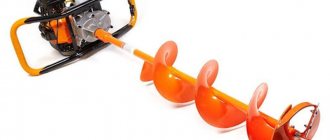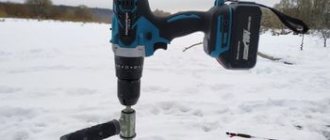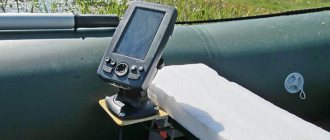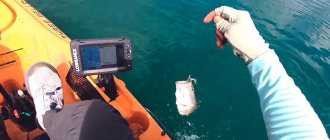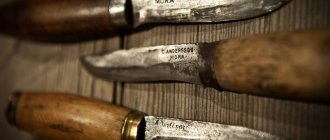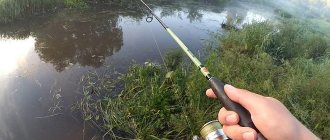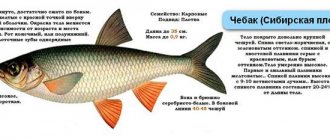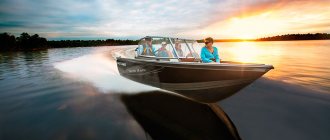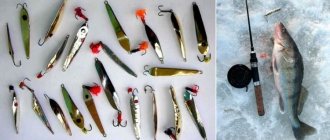Auger diameter
Most standard ice drills have an auger diameter of 120-130 mm. But this does not mean that you need to choose models in this range.
It all depends on the conditions in which you are fishing and what kind of fish you are hunting. If you are interested in not too large fish, then you need holes up to 120 mm in size. The same rule applies to sport fishing: here the suitable diameter of the ice drill auger is 80-100 mm. If you are looking for larger trophies, then the diameter of the auger should be around 150-180 mm, and in some cases even 200.
It is also worth considering that the diameter of the ice drill directly affects the effort that needs to be applied when drilling a hole. The wider the auger, the more strength is required from the angler. This is especially noticeable if the ice is thick and has a heterogeneous structure.
Basic elements of a modern bracelet
Depending on the design features, modern rotators may have a stationary or removable cutting head on which the knives are mounted. The cutting head can be made of metal or durable composite material. This is a very important detail of any spinner for winter fishing, largely determining the ease and speed of drilling. In addition to the cutting head, the design of a modern drill includes several more elements:
- knives,
- screw,
- handle,
- extension cord and connecting part.
When going winter fishing, you should always take into account the characteristics of the ice at the time of fishing. If the weather has been frosty for several days, the ice will be dry and hard. During prolonged thaws, water can form on the surface of the ice cover and the ice structure becomes heterogeneous. In this regard, the most important factor is the angle of attack of the cutting elements. At a high angle of attack, the knives will grab large pieces of ice, which will lead to faster drilling of the hole, but will require more effort from the angler. A small angle of attack will require less labor, but the holes will be drilled a little slower.
On dry, homogeneous ice, it is better to use rotators that have a large angle of attack of the knives. If the ice is heterogeneous and there is water on its surface, it is more advisable to use a tool with knives set at a slight angle.
Knife modifications
You should be especially careful when choosing knives. Usually, when purchasing a brace, the knives are included, but depending on certain conditions, the fisherman can independently change them to more suitable ones. There are several modifications of knives for winter drills:
- flat,
- stepped,
- gear,
- spherical.
The majority of fishermen use flat cutting elements, which work well on dry ice, but do not drill well in wet ice. The flat modification is very easy to sharpen, which makes it the most popular. Stepped products have proven themselves well when drilling both wet and dry ice. Their re-sharpening is also not particularly difficult, but they are a little more expensive.
Serrated knives are designed exclusively for wet ice. Spherical knives drill perfectly into any ice, but are much more expensive than previous models. It is almost impossible to sharpen such products yourself, since this will require special equipment.
Foreign cutting elements are much more expensive than domestic ones, since their production uses higher quality steel that is less susceptible to wear. In addition to the fact that domestic products are much cheaper, they can always be found on store shelves, unlike their foreign counterparts. Each fisherman chooses for himself whether to buy only expensive knives or several sets of cheap ones.
Auger and handle
Above the cutting part, a spiral-shaped auger is welded to the metal base of the drill, which serves to transport crushed ice to the surface. Thanks to the timely removal of crushed ice, drilling becomes much easier. The diameter of the auger should be equal to the total distance between the far ends of the cutting parts. The length of this element is selected taking into account the thickness of the ice cover - the thicker the ice, the longer the length. A long auger significantly increases the mass of the rotor. To lighten the weight of the ice drill, the most expensive models use a titanium auger.
The fishing drill has handles spaced on both sides of the axis, allowing you to drill holes with the least effort. The handles are made of durable plastic and have a limiting edge at the bottom, which prevents the angler’s hand from moving down while drilling. More expensive models have handles made of rubberized plastic, which makes them more pleasant to the touch and provides a secure grip.
Connecting part and extension
For maximum ease of transportation, all ice screws have a folding design. The folding point is equipped with a special lock and a fixing screw. A good brace is easy to fold and disassemble, even if the connecting elements are covered with ice. The connecting parts should not have any play after assembly.
To make holes in very thick ice, special extensions are provided that allow you to increase the working length of the drill by several tens of centimeters. Some drills have a built-in extension, which makes them heavier, but at the same time makes it much easier to drill holes in thick ice. Many fishermen independently make elements that lengthen the brace.
Fishing conditions
Much depends on the nature of the fishing. If you are engaged in search or sport fishing, then you will have to drill a large number of holes. In this case, the speed of the ice drill and the low force that you need to apply when drilling holes are very important.
Ice screws that are fast and easy to use don't come cheap. At the same time, their quality is determined by a number of factors: design features, the knives used, and the material. But the ease of handling such an ice auger pays off.
It’s a completely different matter if you fish in one place and move around little. This, for example, often happens when fishing for bream. Of course, an expensive ice auger is easier to control in this case. But it is not necessary to buy it for such fishing. You can easily drill holes with a budget ice drill. Yes, it will take a little longer, but you won’t feel much of a difference. You can feel it only if you drill dozens of holes.
In a word, if you are not involved in active fishing, then a simple ice auger is quite suitable for you. Also keep in mind that sports ice drills have a high cost of consumables. In particular, their knives cost two to three times more than regular budget knives. You shouldn't overpay for expensive ice screws if you don't intend to use all their capabilities while fishing.
How to sharpen ice drill knives correctly
To get fish out of a frozen pond in winter, you need to have a good ice auger with sharp knives. You can, of course, get by with a grandfather’s pick, but for ice thicker than 40.60 cm, an ice auger is still better.
On lakes, ice ax knives remain sharp for quite a long time. But on rivers like the Akhtuba and especially the Volga, where there is a lot of drift sand in the ice, the knives become dull instantly. You have to change 2.3 pairs of knives per day. In short, you have to sharpen the knives for the ice drill after every fishing trip on the river.
It is known that when sharpening knives “by eye,” the blades often come out with some defects. Thus, the sharpened chamfer of the cutting edge often becomes skewed (Fig. 1).
It happens that the sharpened chamfer becomes oval or with a fracture (Fig. 2).
Another sharpening defect includes the formation of a burr directed towards the chamfer of the cutting edge (Fig. 3).
Although, in general, a slight burr oriented in the opposite direction is allowed. I note that both of these burrs are removed by finishing the knives on a fine-grained block with a flat surface or on a sheet of sandpaper (zero), spread on a flat surface, for example, on a sheet of glass. Well, when sharpening knives, it is necessary to maintain the required (optimal) cutting chamfer angle (Fig. 4).
It is clear that all the defects listed above, as a rule, greatly impair the cutting characteristics of knives. But it is no less important when sharpening knives by any method to prevent the metal from darkening, that is, its overheating (burnout). And in order to prevent overburning, during the sharpening process the knives should not be pressed with great force against the sharpening stone, and they are also periodically cooled by immersing them in cold water.
Check the quality of knife sharpening in the following simple way. Press the knife blade against the fingernail, positioning the knife with the chamfer up and at an angle of 20.30° to the nail. If the knife cuts into the nail when pressed lightly, then you won't have to sweat when drilling holes in the ice. If the knife starts to slide along the nail, it is dull. Using a fingernail, check the sharpness of the knife along the entire length of the cutting edge.
As already mentioned, sharpening knives “by eye” often does not give good results. Therefore, I designed a special device for this purpose, which allows me to reduce possible sharpening defects to a minimum. And below I will tell you about it in detail.
Handle connection
When purchasing an ice drill, it is very important to check the connection between the auger axis and the handle. There shouldn't be any play here. Any unsteadiness of the handle leads to rapid damage to the device. Due to backlash during operation, the center line shifts to the side, the knives work unevenly, move away from the vertical position and inevitably jam. This leads to their rapid wear.
There are many types of handle and axle connections. All of them are quite reliable, but only with high-quality performance. Therefore, when purchasing, you need to check the connection for play. Carry out a check even if you purchase an expensive ice auger. Remember, you should not exclude the possibility of defects even in premium models.
Screw turns
The design of the ice auger comes in two types: welded and seamless. The most common are welded screws. The coils in this case are made from welded plates of bent metal. Solid-drawn screws are made from a single plate. There is no big difference between them. The only difference is that less ice forms on seamless augers in severe frosts.
You also need to pay attention to how the auger is welded to the ice auger axis. For expensive and high-quality models, welding is carried out along the entire length of the axis. But for cheap models, the tape is usually welded only in certain areas.
Of course, spot welding is less durable. In addition, augers with this type of welding work louder, scaring away the fish. They also become more covered with ice, which makes the ice drill’s passability worse.
As a rule, many ice drills from neighboring countries are supposed to rotate counterclockwise, but European ones are supposed to rotate clockwise. This does not affect the quality of drilling in any way. In general, this is a matter of habit. Even if you decide to change the manufacturer, it is very easy to relearn the new direction of rotation.
Differences among models
The main differences between the different models are the shape of the handles and the principles of drilling. Almost all domestically produced ice drills require drilling holes in a counterclockwise direction.
As for Finnish and Swedish equipment, their operating principle is based on clockwise movement. Thus, the choice of ice drill in the direction of movement depends on the personal preferences of the fishermen.
All modifications of drills for winter fishing have a cutting edge sharpened in the shape of knives. The configuration and location differs depending on the structural features of the device, the ice and its thickness. Also, companies producing ice drills offer an innovative solution consisting of a replaceable “head” of the tool. This innovative solution is most often used by Finnish manufacturers.
Advice from an old fisherman In frosty weather, after drilling a hole, it is best to shake the ice drill and screw it 10 cm into the ice. In this way, the knives will be kept clean from wet ice chips, preventing the appearance of slush. It is better not to use this method when the frost increases sharply - the knives can freeze tightly.
Fans of fishing in winter know that this period requires special preparation in terms of choosing gear, equipment and equipment. This time, experts from the KREPIZH store chain examined an absolutely necessary device for winter fishing - an ice screw. Why is it needed, and how to choose it correctly?
The main purpose of the ice drill follows from its name: it is necessary to make holes in the ice. Without it, the fisherman will have to look for old holes and try to catch something through them, or he will be forced to ask his “colleagues” for an ice auger. When choosing an ice drill, there are a lot of nuances that should be taken into account to make fishing as comfortable as possible. The range of ice drills on the market is now very extensive, and each of them has its own set of basic characteristics.
Auger length One of the main criteria that needs to be determined when purchasing an ice drill is the length of the auger. At this point you need to decide what maximum thickness of ice will appear before the fisherman.
If the auger is short, then drilling will be more difficult: the ice is thrown out of the hole less intensively. You will have to remove the ice screw from the hole more often to prevent it from jamming. But such a tool is much lighter and easier to carry with you.
One of the representatives is the TONAR LR-130D two-handed ice drill. Drilling diameter – 130 mm, drilling depth – 1000 mm. The weight of the ice drill is about two and a half kilograms.
Direction of rotation All ice screws are divided according to the direction of rotation - clockwise and counterclockwise. In general, this is a matter of habit for every fisherman: for some it is more convenient to rotate the ice screw to the left, for others - to the right. As a rule, European-made instruments, in particular Swedish ones, are made for right-hand rotation. Most Russian ice screws are left-handed, but there are also Swedish-style models with right-handed rotation.
Ice auger diameter The easiest way to choose the diameter of an ice auger is based on the fish that the fisherman is going to catch.
Thus, lake perch weighing 500 grams or more is best fished for with a large hole diameter (from 150 mm) because of its characteristic hump. If the perch is small (up to 300 grams), then a sports-type ice drill with a diameter of 100 mm is also suitable. For average fish, 130 mm is suitable.
Most roaches fit into the hole 100 mm. Larger fish are extremely rare, but they will require an increased hole diameter.
The reservoirs contain bream of a wide variety of sizes - from 300-gram bream to one and a half kilogram fish. And if in the first case a 130 mm hole is enough, then for a larger one you will have to drill an additional hole or use a hook.
It is best to fish for pike perch in holes of maximum diameter. However, for sport fishing for pike perch weighing up to a kilogram, a 130 mm hole is suitable.
Pike. It all depends on the gear - if you fish with a spoon, then the size of the pike is unlikely to exceed one and a half kilograms, and in this case a small ice screw will do. However, if the fisherman is armed with a fishing rod, then it is better to drill the largest hole, since there is a high probability of catching an individual weighing up to five kilograms.
Reliability of parts When choosing an ice drill, you should pay attention to the quality of its manufacture. The reliability of an ice auger depends on the welds, especially spot welding, handles, and painting. The mechanism for connecting the parts of the ice auger is also of great importance; it experiences heavy loads when folding/unfolding. Obviously, metal wings will last longer than, for example, plastic ones.
The defining characteristic when working with an ice auger is its blades. Knives are flat and spherical. The advantage of flat knives is their low cost and ease of sharpening, which you can do yourself. Most domestic models are equipped with them. However, their common problem is breaking off the corners, so it is better to always have a repair kit with you.
Imported manufacturers prefer spherical knives because they provide the smoothest operation and less noise. Such blades are resistant to wet ice and are more convenient for drilling out old holes.
Advice from an old fisherman In frosty weather, after drilling a hole, it is best to shake the ice drill and screw it 10 cm into the ice. In this way, the knives will be kept clean from wet ice chips, preventing the appearance of slush. It is better not to use this method when the frost increases sharply - the knives can freeze tightly.
Do not knock knives on ice - the corners may break and the sharpening angle may change. And the knife attachment itself may suffer.
To remove frozen ice from an ice auger, it is best to lower it into the hole, and it will thaw in the water. As a last resort, you can use a wooden stick. It is not recommended to put an ice drill into a fire, since the steel may lose its hardening and the knives will become dull very quickly.
Sometimes during fishing the bolts that secure the knives may become loose. It is better to always have a minimum set of tools with you - a screwdriver and a wrench.
You should always pay attention to the composition of the ice - if it contains sand, dirt or debris, the knives will quickly become unusable.
After fishing, it is best to thaw the ice screw, dry it and wipe the knives with a clean cloth. In order for the tool to serve for a long time, you need to regularly lubricate the cutting edge and the joint of the ice auger elbows. Any machine oil will do for this. The KREPIZH chain of stores offers a wide selection of ice drills of domestic and foreign production, and spare parts for them. Both a professional athlete and an amateur fisherman will be able to choose an ice screw of a suitable diameter and design for themselves.
Folding two-handed model of an ice auger operating on an auger circuit. Equipped with a telescopic extension, which allows you to significantly increase the depth of the drilled hole. The last factor is important for regions with deep freezing of water bodies and the formation of thick ice.
Auger length
You should also pay attention to the length of the auger. It is very important that it be greater than the thickness of the ice, otherwise the hole will become clogged with ice chips and drilling will become very difficult.
Many ice drills have an auger length of about 50 cm. This length is quite enough if the ice layer on reservoirs does not exceed 40 cm. If you fish in more difficult conditions, you should pay attention to models whose auger length is 60-80 cm.
You should not buy models with a screw that is too long . You won't need its entire length, but it will add weight to the tool.
Serrated and spherical knives
Today on the fishing equipment market you can see a variety of drill cutters. The most common:
- Serrated.
- Oval.
- Universal.
- Stepped.
Which knives are best for an ice drill, everyone chooses for themselves.
All of them are designed for different surface types and weather conditions. To choose the right ones, you need to know how they differ:
Serrated blades are an indispensable assistant in the fight against heavily moistened ice. They will help out when winter is already receding and water from the spring sun begins to wash small channels on the surface of the reservoir, abundantly saturating the ice layer. Small contact area reduces drag force. It's worth noting that the blades need to be "break-in" (approximately 30-40 holes), during which time the drilling can be a little aggressive. For some, when it gets from the ice into the water.
Oval (spherical) - suitable for almost all possible types of ice cover on water bodies. As a rule, spherical ones are included in the basic kit with most ice drills from well-known companies that are present on the Russian market. Unfortunately, this form has one critical drawback: the cutters become dull rather quickly, and it is almost impossible to sharpen them at home.
The cost of sharpening from a professional is, as a rule, 50% of the price tag for new ones in the store, and it is undesirable to subject them to this procedure more than three times.
Tool painting
The formation of ice on an ice auger also depends on the quality of the paint with which the tool is treated.
If the surface of the coating is smooth, less moisture accumulates on it. If the paint layer is rough and uneven, then more ice will form. Things are worse with ice screws, on which the paint has begun to peel off. This is where the ice freezes fastest. Unfortunately, on ice screws from neighboring countries, the paint wears off very quickly, literally after several fishing trips. And in areas where the paint has come off, rust soon appears. On imported models, the paint lasts longer.
Ice auger handles
Many ice screws have handles made of plastic, but in winter such models are clearly inferior to tools with rubber handles. The fact is that plastic cools quickly. It is not so easy to use it in the cold. But rubber handles are both more pleasant to the touch and more practical to use.
To make drilling ice more convenient, you need to carefully select the length of the ice drill along with the handles. The height of the instrument should be such that the top handle is level with your shoulders and the bottom handle is opposite your diaphragm. With these parameters of the ice drill, you will be comfortable working with it both at the beginning of drilling a hole and at the end, when the tool has gone deep into the ice. Plus, you barely have to bend over, which is a plus.
Of course, there are models that allow you to adjust the length of the handle. This is probably convenient in practice if you need to drill more than a dozen holes. But in this case, there are additional nodes on the handle, and therefore places of reduced strength. This generally complicates the work with the ice auger and increases its wear. In such models, special attention must be paid to ensure that there is no play.
Which ice screw to choose
It will be difficult for a beginner to decide on a model, and more experienced fishermen may not always be able to choose the right model. Before you go shopping, you should carefully study the market and all the necessary information, communicate with more experienced friends, and read reviews about a particular ice drill model.
When choosing an ice screw, you should pay attention to the following:
- The length of the rod determines the maximum thickness of ice that can be drilled. This figure can be increased with special extension cords.
- Screw diameter, the most popular models are 100-130 mm.
- The noise level during drilling, titanium products will be the loudest, the rest have approximately the same indicators.
- Availability of the cutting element, knives in particular. When choosing a model, you should ask whether you can find spare knives in other stores.
- Weight, you should not choose very light models; they will perform well during transportation, but during the drilling process they will require additional effort.
If in the future you plan to use an ice drill for drilling the earth, you must initially clarify the availability of special augers for a specific model.
Victoria Leshchenko
I've been working hard in the fishing tackle department for the past six years. I can help you assemble almost any gear.
Ask a Question
Check the integrity of the handles on the handle and the presence of a knife guard before purchasing. These elements will help protect the product from various types of damage.
Automatic models
In addition to manual ice augers, there are also automatic ice augers that run on gasoline or electricity.
The gasoline ice auger is the most powerful, but requires more attention from the angler. You will have to monitor the quality of the fuel, repair the engine if necessary and, of course, control the sharpness of the knives. Such models are quite expensive. At the same time, they are very noisy and difficult to handle. Also, the smell of fuel can remain on your hands and transfer to the bait, and this will definitely affect the bite.
Electric ice augers are much more convenient: they weigh less and are quieter. But their power is less than that of gasoline ones. In addition, you will have to charge the battery before almost every fishing trip.
Ice auger wear
Typically, ice drill knives can withstand 700-800 holes, and often this is not the limit. But don't let your knives become completely dull. It is better to remove them a little earlier and then sharpen them. Unfortunately, not all knives are sharpened. This is especially true for Western models with uneven sharpening angles.
We must also take into account that the ice in our reservoirs is quite extreme. It contains a lot of abrasive: sand, debris. Often even glass from broken bottles freezes there. When faced with such surprises, the ice drill knives immediately become unusable and may deteriorate without ever working through the required number of holes. You need to be prepared for this.
